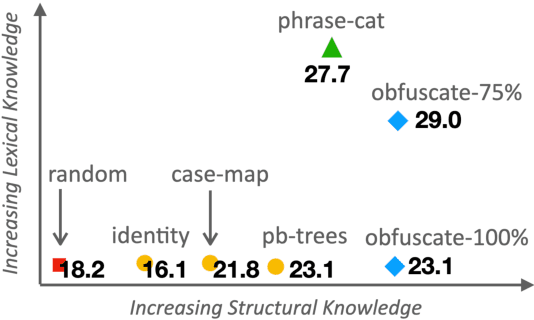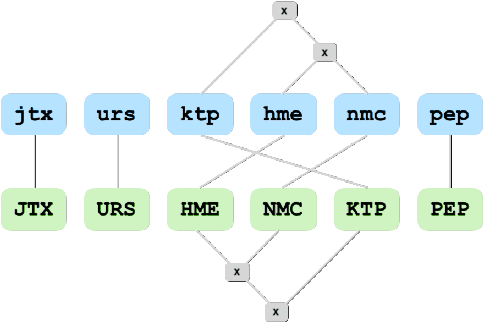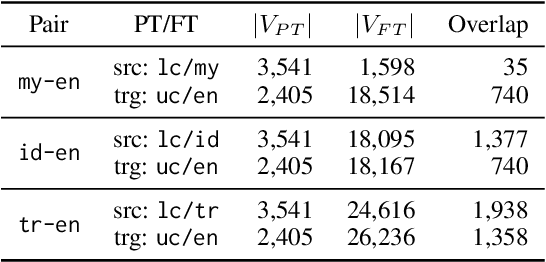Graeme Blackwood
Synthetic Pre-Training Tasks for Neural Machine Translation
Dec 19, 2022



Abstract:Pre-training is an effective technique for ensuring robust performance on a variety of machine learning tasks. It typically depends on large-scale crawled corpora that can result in toxic or biased models. Such data can also be problematic with respect to copyright, attribution, and privacy. Pre-training with synthetic tasks and data is a promising way of alleviating such concerns since no real-world information is ingested by the model. Our goal in this paper is to understand what makes for a good pre-trained model when using synthetic resources. We answer this question in the context of neural machine translation by considering two novel approaches to translation model pre-training. Our first approach studies the effect of pre-training on obfuscated data derived from a parallel corpus by mapping words to a vocabulary of 'nonsense' tokens. Our second approach explores the effect of pre-training on procedurally generated synthetic parallel data that does not depend on any real human language corpus. Our empirical evaluation on multiple language pairs shows that, to a surprising degree, the benefits of pre-training can be realized even with obfuscated or purely synthetic parallel data. In our analysis, we consider the extent to which obfuscated and synthetic pre-training techniques can be used to mitigate the issue of hallucinated model toxicity.
Multilingual Neural Machine Translation with Task-Specific Attention
Jun 08, 2018



Abstract:Multilingual machine translation addresses the task of translating between multiple source and target languages. We propose task-specific attention models, a simple but effective technique for improving the quality of sequence-to-sequence neural multilingual translation. Our approach seeks to retain as much of the parameter sharing generalization of NMT models as possible, while still allowing for language-specific specialization of the attention model to a particular language-pair or task. Our experiments on four languages of the Europarl corpus show that using a target-specific model of attention provides consistent gains in translation quality for all possible translation directions, compared to a model in which all parameters are shared. We observe improved translation quality even in the (extreme) low-resource zero-shot translation directions for which the model never saw explicitly paired parallel data.
 Add to Chrome
Add to Chrome Add to Firefox
Add to Firefox Add to Edge
Add to Edge